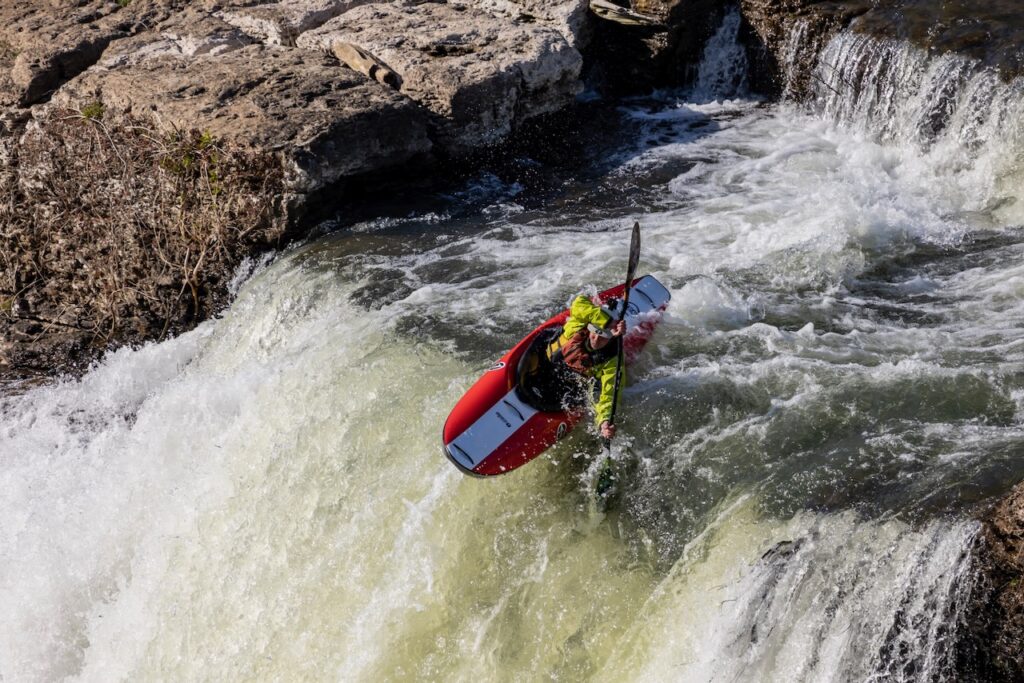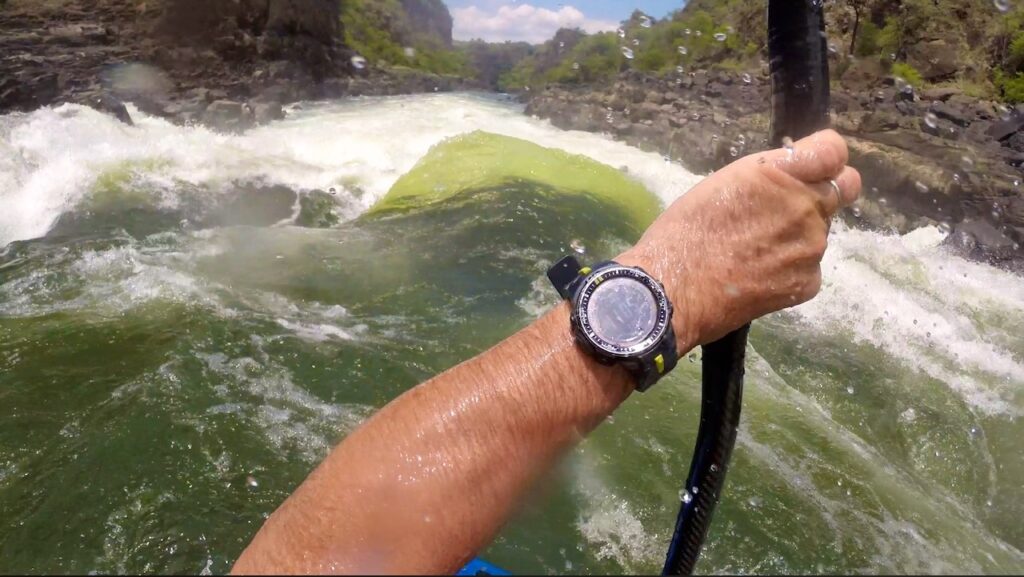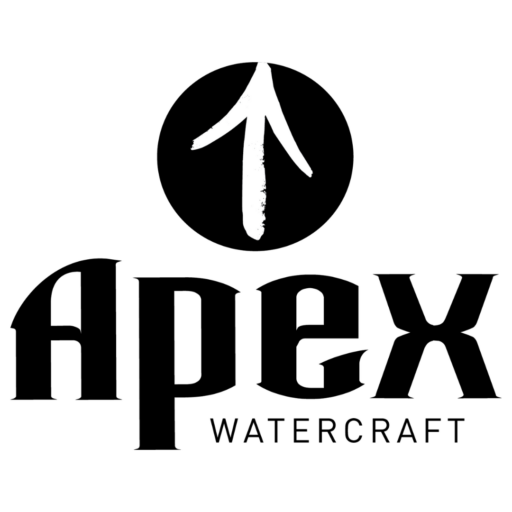1970’s-1993- Paddlers didn’t have access to the best techniques as the best paddlers were in a vacuum. The techniques taught were outdated, and not created with access to the best paddler’s input.
What does that even mean? It means that the world’s best paddlers with the best Stroke techniques were the best slalom racers, and those racers were not instructors. “Best Slalom Racer” was Richard Fox- 5 Time World Champion. He was a student of the sport and created and perfected best practices in his time. It is no coincidence that his daughter, Jessica, is now the dominant female. (Miriam, Jessica’s Mom, was also a world champion slalom racer and her coach)

When you combine an intense desire to perfect your form, with the willingness to train harder than others and get your mental game in order, you are nearly unbeatable, like Jessica Fox, and her father before her.

6 weeks of training with Richard Fox in Brazil in 1988 taught me that there was a much bigger world with information I was not yet receiving, and in this case, at this time, only he had that information.
Disclaimer, just because somebody does slalom, doesn’t mean they have good strokes, or understand what good strokes are. This is such an oversight by so many. The “Best” ones have both an understanding, and the ability to put them to use, that they are more efficient and faster than the others. There were a few paddlers and coaches over the years who truly studied the strokes enough to not only understand what and why, but also change them for the better.
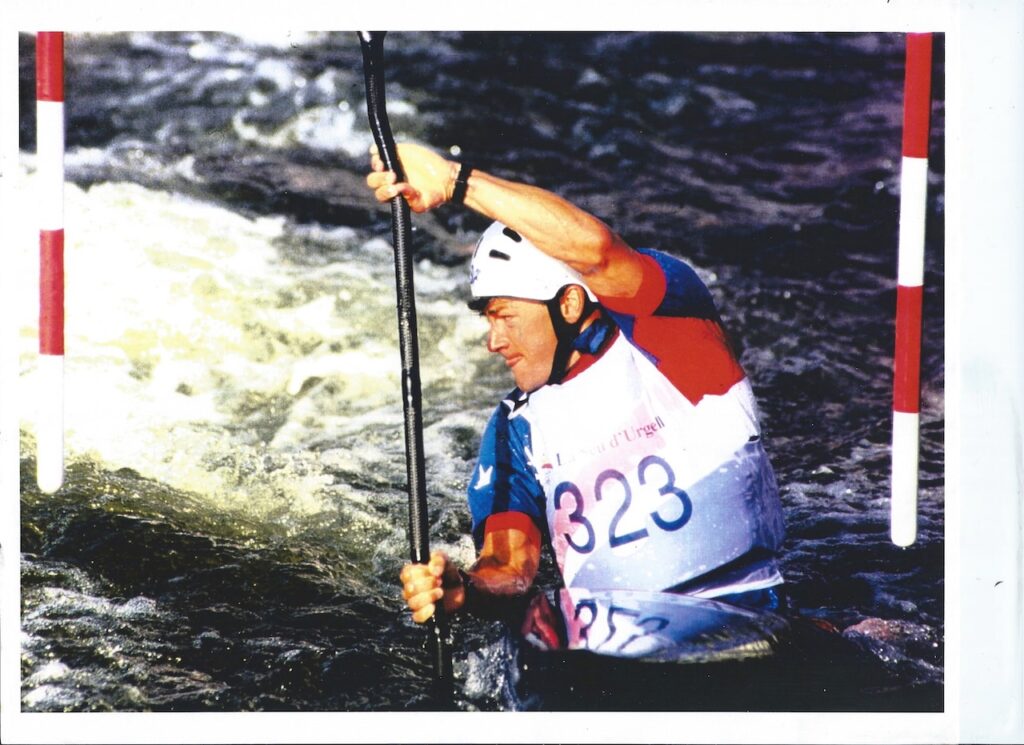
EJ at Gate 13 in the 1992 Olympics- Still lots to learn, ideas to change, bad information/habits to overcome.
In 1992, at a USA Team training camp for the Olympics in Spain we were doing a video review of our workout and Scott Shipley suggested a new way to approach upstream gates that changed up both the strokes and the line your boat was on to show a wider approach that took longer on the way in, but you came out with more speed and it took less energy. Bill Endicott is an “empirical data” guy and said, “Let’s time it”. He took split times on the upstream gate with my run doing how Bill was coaching it, and then Scott’s way. My way was .2 seconds faster. Bill said, “Scott, it isn’t slow, but not the fastest way.” Scott said, “I like my way and will continue to do it that way.” While I was highest placing American K1 in the 1992 Olympics with a 13th place, ahead of Scott, the next year Scott had perfected his technique and won the World Cup. At that moment, I realized that just because a technique is taught by the world’s best coaches and done by the world’s best athletes, that doesn’t make it the best technique. The “Best Technique” is created by innovative athletes and they teach the coaches how they are doing it. This is especially true in a sport that is quickly evolving. Kayaking was rapidly evolving in the 1990s. Boats were going from 13’, to 12, to 11, to 10, and 9’, and finally to under 7’ during that decade. This was so fast and so big of a change that techniques had to be invented and perfected in real time, every time a new boat was made.
I took hold of a quote that I first heard in the “Psychology of Winning” program by Dennis Waitley that says, “Are your prejudices inherited, or are they your own?” This quote applies to everything from religion to food, to kayak techniques. Do you believe what you believe because everyone around you says it is true? Unfortunately, due to the simple lack of good information in whitewater kayaking, this is where 99% of the technique information came from in Rolling and Bracing and Strokes and Concepts. Information passed down from person to person, in the form of “Old Wives Tales” is how I explain it. Yes, there were instruction manuals by the British Canoe Union and the American Canoe Association. However, to this day, they have not identified the best information and are passing on the Old Wives Tales with enthusiasm in many of their teachings. If you want to pass their instruction certification course, you have to demonstrate many things perfectly wrong.
Best practices. Best Practices are both critically important, but also damaging if you don’t recognize that they are a moving target and should be in a state of constant challenge and improvement.
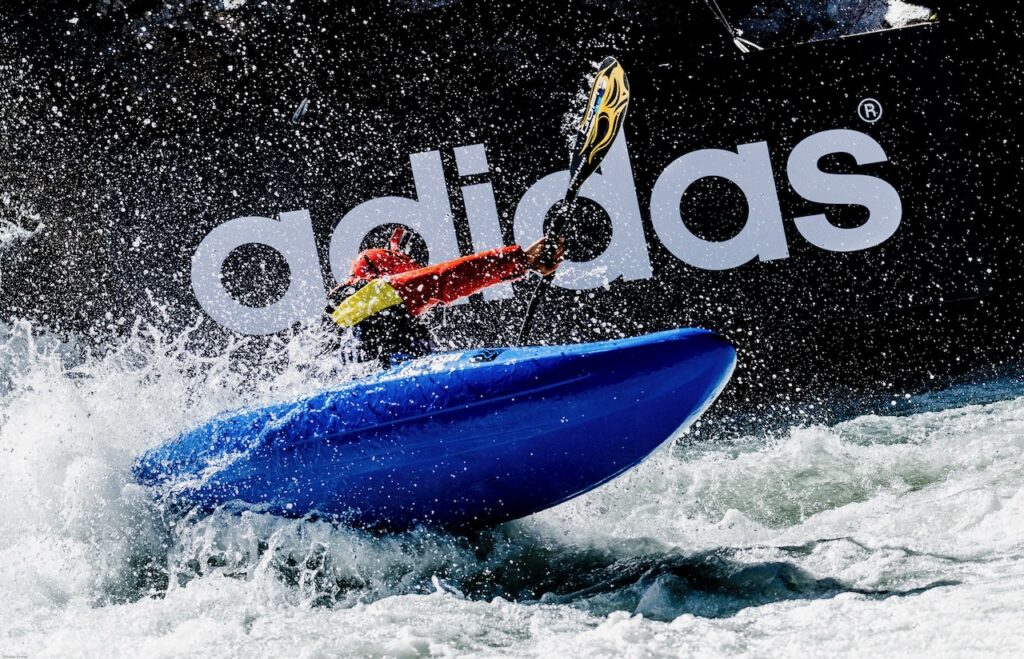
9′ creek boat.
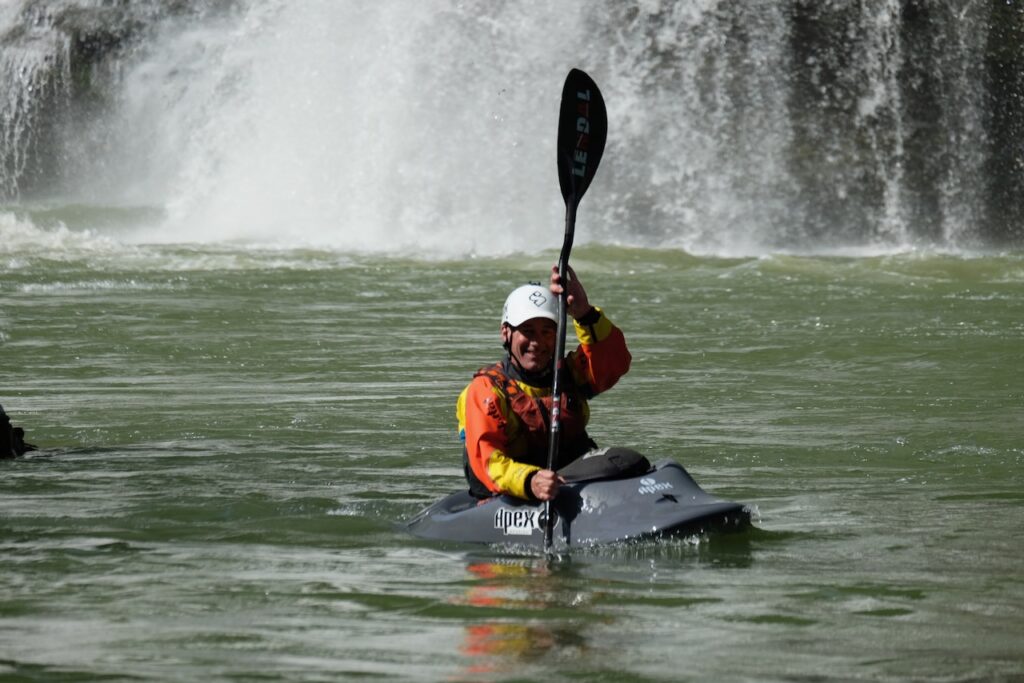
5’7″ Playboat
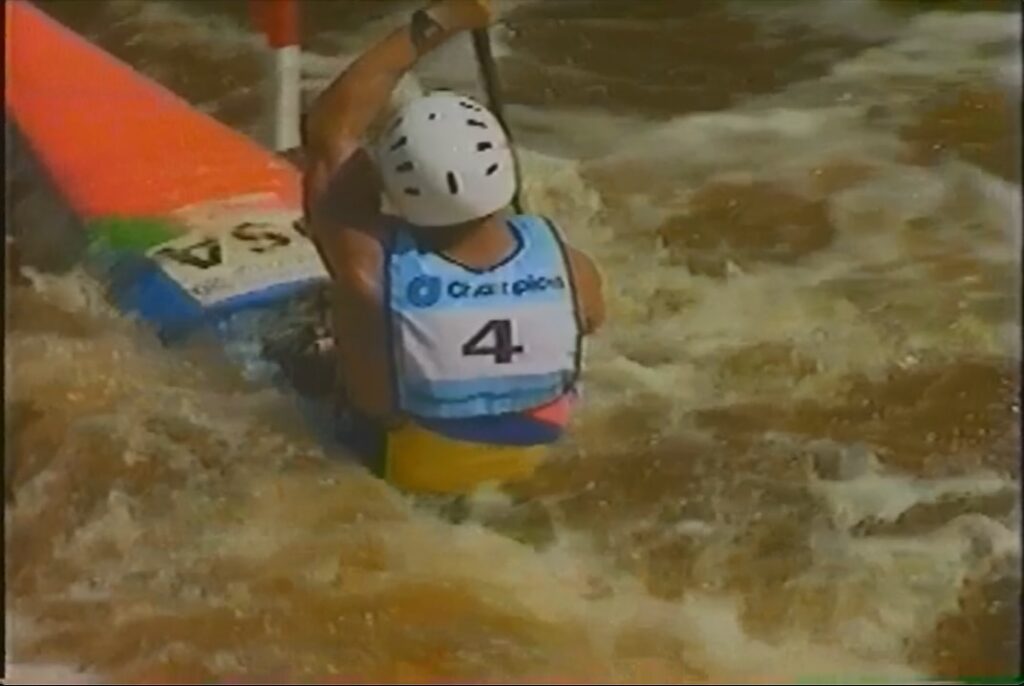
13’2- Slalom boat
Most of the strokes today are done the same whether you are in a playboat or a longer creek boat. However, if you are in a “long boat” there are some differences if you need to make tight turns do the amount of force it takes to turn the boat if going offline fast. We’ll focus on what 99% of the paddlers are paddling 99% of the time, boats from 5’-10”.
The natural turning radius of boats in that range is generally tighter than you need to make if you are paddling more or less online. That makes the goal of your turning strokes to control the turns naturally, and to keep the speed around the turns, versus slowing down your momentum or stopping it. Whitewater kayaks slide out and stop, they don’t carry their speed around a turn on their own. (Paddle forward with speed, put your paddle in the air and see what the boat does- the stern will slide out and you’ll end up backwards and not moving towards where your bow is pointed any more, but just sliding backwards).
One simple example of “EJ’s Strokes and Concepts” that illustrates just how much more effective “doing it right” is than what is taught generally is my “U-Turn Test” around the stern of another kayak. The international average for how many strokes it takes to paddle up to somebody’s kayak, around their stern and back the other way is 5 strokes and a speed slightly slower than they came into the turn with. Don’t properly, anyone who knows how to do a proper draw stroke can do it in 1 stroke with more control, and more speed throughout than the 5 strokes. That is eliminating 80% of your strokes when turning and with more control and speed. Should be a no-brainer, but a proper draw stroke isn’t taught in 99% of instructional settings. You can learn this in a day, but for it to be a habit and put it to work, you need to do my 12-minute stroke drill warm-up where you are in flatwater and focused on paddle dexterity, spin momentum control, and put the draw stroke through its paces in a variety of formats.
My training pod here in Rock Island over the years certainly can demonstrate this specific skill to you on demand. (Emily, Dane, Nick, Clay, and Stephen for starters).
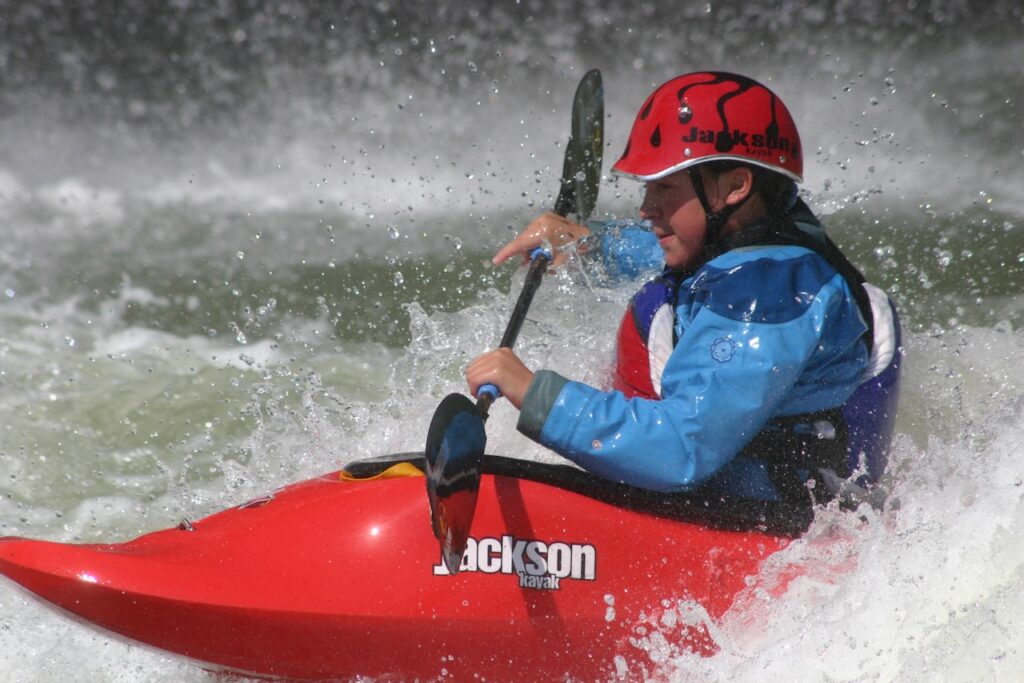
Young Emily at 13 learning new things everyday.
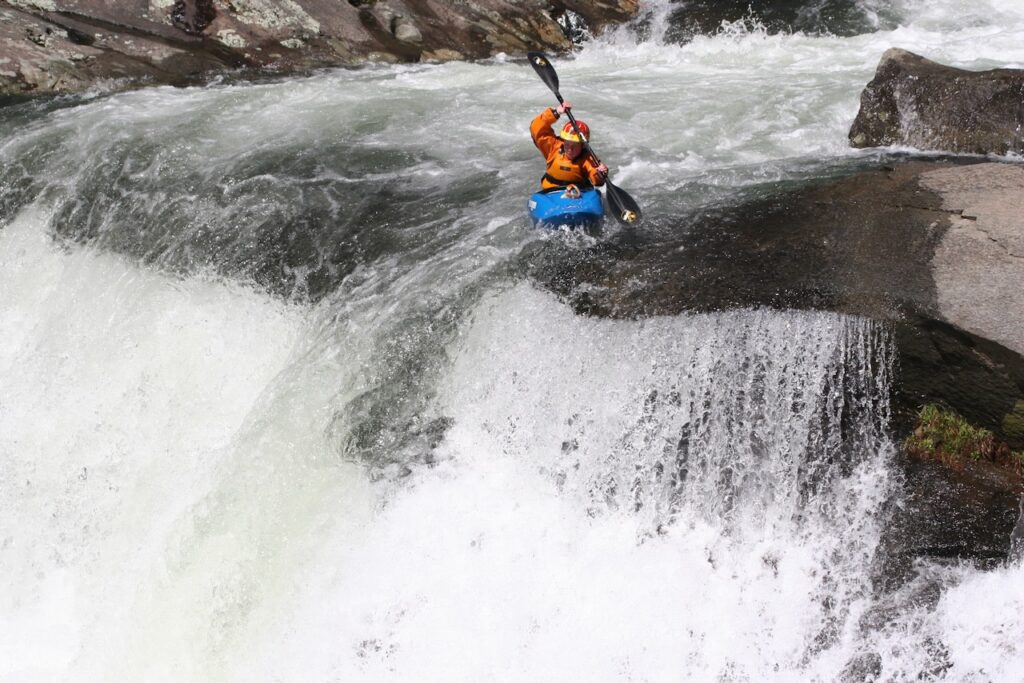
Dane, always wanting to do it over again until he got it right, always a sponge for information.

Dane never learned bad habits in the first place.
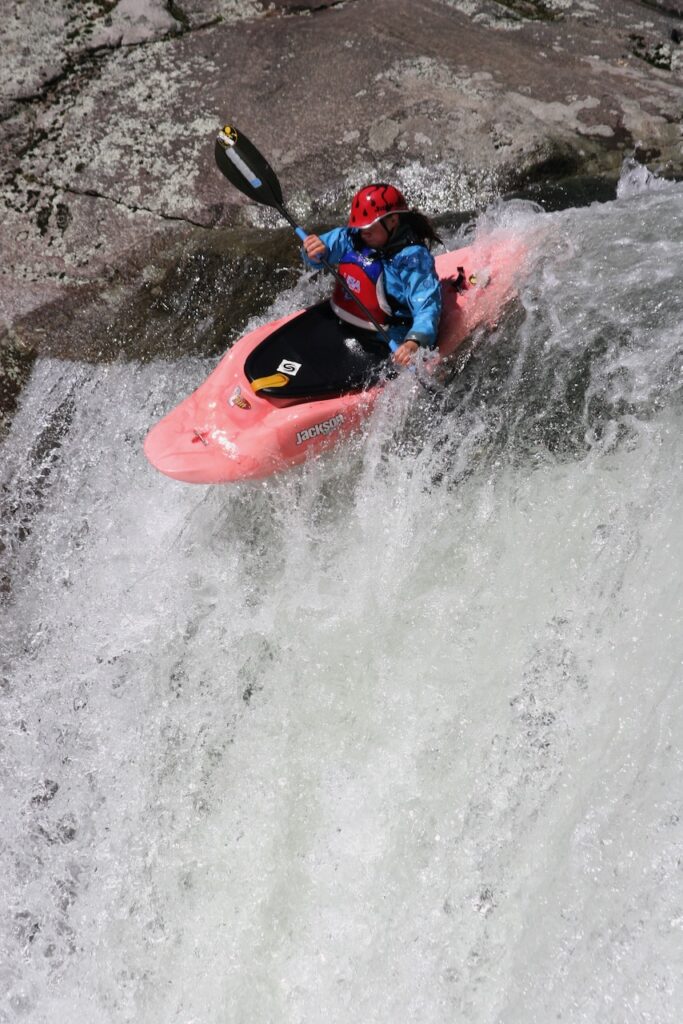
Emily loved learning, listening, and trying out her skills.
I put every skill I was ever taught by the world’s best slalom coaches (Bill Endicott, Sylvan Poberaj, Jean Michele Prono, and more- Australia’s Roy Farrence, Germany, Italy, Spain, Austria, Canada, etc. who I trained under at one point or another) on the table as potentially being 180 degrees backwards, or at least in need of improvement. I studied the ACA and British Canoe Union manuals, and was the top playboater at the World Championships in 1993 the year I wrote my first Strokes and Concepts Manual. I was winning the majority of the creek races I entered, running hard creeks and big water with the best in the world at the time. I had a great all-around set of people to pull information from, including my own experience, of course. By the Fall of 1993, I had the “World Kayak Federation” instructor certification course mostly developed to train the next generation of instructors with the “best practices” in Rolling and Bracing, Strokes and Concepts, River Running, Safety, and Playboating. Playboating in 1993 and 2024 are two different beasts. Imagine if your only manual for Playboating was written in 1993 and you wanted to learn how to do all of the moves. You would be out of luck.
One more important thing to remember is when you want to be a “student of the sport” and get better. In the words of Winston Churchill, “The difference between the professional and the amateur is that the professional focuses on logistics while the amateur on tactics”. This is so applicable in kayaking. Understanding the overall goals and strategy for how to move your boat, what your brain should be focused on (what kind of mental focus works, and how to get into that focus), your equipment, training/practice, physical abilities, etc. etc. are all part of a strategy that can help you perform your best on the water and apply the tactics that are taught. A focus only on tactics will fall in its face as you are missing the big picture that is required to make it all come together.
Here is an example of “how to compete- a strategic plan” I did for freestyle a few years ago.
The biggest challenge of even writing this article, in terms of it having any effect, is that 90% of the instructors who read it, will immediately think, “That doesn’t apply to me” and continue spreading the old wives’ tales and teaching outdated and bad information. With that said, don’t misunderstand me here, that same instructor will teach some good information, treat their student with care and patience and get their students paddling and happy. You do not need to be a great paddler using best practices in Strokes and Concepts to get down a class 5 river. 90% of class 5 is floating along, making a move, catching an eddy. Yes, using ideal strokes and concepts makes it way more controlled, more efficient, and the ability to be faster and use way fewer strokes. But, reading water, a good mental game, and choosing the right lines gets you down. If you want to dominate the racing scene, however, I suggest you learn your strokes properly. If you just want to be as good as you can be, I also suggest you learn your strokes understand them, practice as much as you decide you want to, and not go through your entire paddling career ignorant of best practices.
You can find these best practices on my YouTube channel, and they are not secret nor do I require you to pay to see them.
How to learn them: Your Strategy and then the tactics:
Strategy- For you to work on your strokes, I created the “EJ’s 12-Minute Stroke Drill Warm-up”. The assumption is that if you commit to learning them, you’ll spend 12 minutes at the beginning of every paddle warming up to prevent injury. During that warm-up, you’ll be practising your strokes. My drills are designed to accomplish both at the same time. If you do the drills properly- for example- 100 forward strokes- 50 slow, 25 medium pace, and 25 full speed, you’ll warm up those muscles slowly, but also get them ready for action at top speed. You will also, during your turning drills, warm up your neck, torso, and entire body in a way that is ready for action. You can do the drills in 100% flatwater, or easy whitewater. You learn paddle dexterity and spin-momentum control, and if you are truly a student of the sport and memorize the proper Head, Paddle, boat, and body positions for each stroke and the “whys”, you’ll begin to understand what you are doing right and wrong during the drills. Ultimately, getting a video review is required if you want to improve. Everyone tends to do the strokes and thinks they are doing it right unless they get coaching and video to compare their strokes to the best practices. Ultimately, you will automatically apply your new habits to the whitewater without much of a challenge. As a human, your RAM (random access memory) is very limited and you can’t consciously focus on your head, paddle, boat, and body at the same time, never mind add in whitewater. You will always revert to your habits when in whitewater. Your goal is to override bad habits taught to you, or that you created on your own with good habits.
My approach to everything in life is- What is wrong with what I accept as best practices today? What can I improve in my next kayak design? What can I improve in techniques? Etc. etc. This is how you innovate and how you avoid being stagnant. If you poll 10 of your friends and all 10 of them say one thing about a stroke, or about rolling, or boat design, does that make it true? I will suggest that it likely means it isn’t true. Certainly what they all agree to isn’t innovative. It could be 100% wrong, but widely accepted, or simply outdated. The best techniques are constantly evolving to some level. By definition, the masses don’t know them.
Off-topic, but as a point of discussion- a forecast of the future where the masses don’t agree with something today, but they begin to accept it and ultimately support and defend it in the future…. Knowing the future before it comes. How do people do that? It is simple. The reality is that the future already happened. There is a huge lag between what is known by the masses and what was already created. It takes years for things to reach critical mass after it was already created. Carbon boats- the generally accepted, widely known “fact” is that lightweight carbon fiber kayaks are not ideal for whitewater paddling. 5 years from now it will be a widely known, generally accepted “fact” that lightweight carbon fiber kayaks are ideal for whitewater. 180-degree change. Yes, plastic boats will still sell more units than carbon because of price, and because carbon boats are not ideal for every river. However, simply from me selling one boat at a time to people from around the USA/World, they are seen enjoying their boat that is 1/2 of the weight of a plastic boat, good looking, and not breaking on every run like the general public imagines they will. Then their friends pick one up and say, “Wow, that is super lightweight”, and perhaps they get to paddle their friend’s boat and say “Wow, that is amazing.” One at a time, one person turns to 2, 2 people turn to 4, 4 to 8, 8 to 16, and so on until the entire paddling world has a direct experience with an Apex Watercraft lightweight carbon kayak. Once that happens, they may not buy one, but they understand the attraction, and benefits, and “want one”. Anyone who says they don’t want their boat to be 50% lighter is not telling the truth. They may not want it to be 2x’s more expensive, or worry about the prospect of breaking it, but they do want a lighter boat. (FYI- a carbon boat should last longer than a plastic boat and be strong and functional throughout its lifespan. They are easy to repair if broken and are stronger after a repair than brand new.)
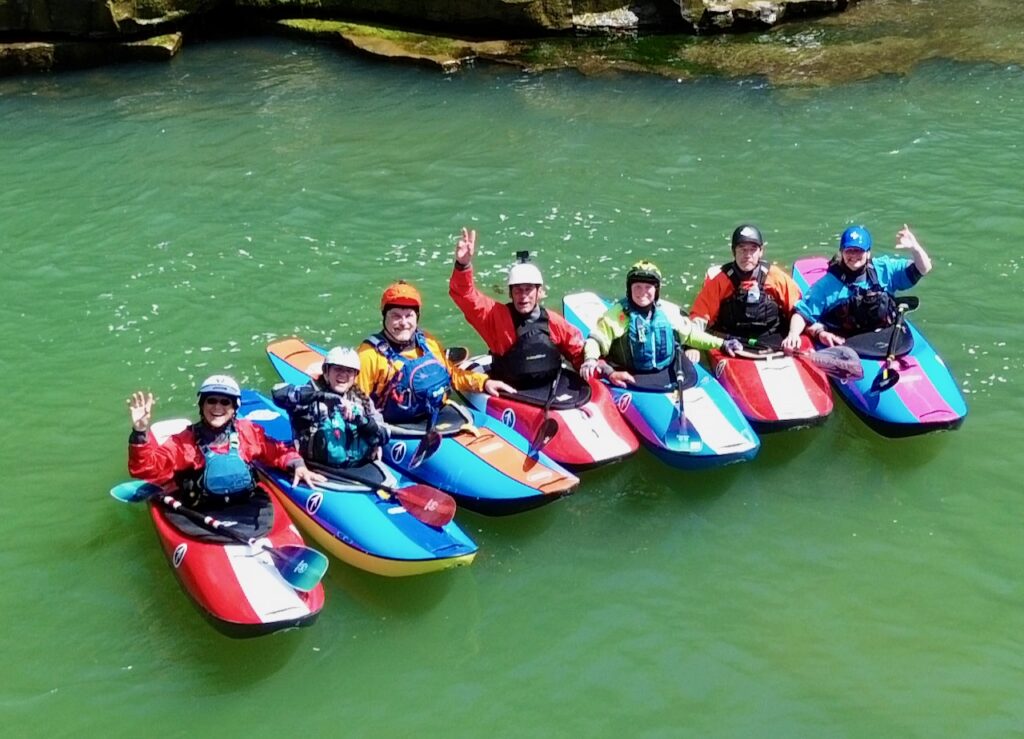
Coming to a river near you!
Why did I use this example for my Strokes and Concepts history blog? For two reasons, if you dispel my writings about best practices not being taught today in 99% of the kayak schools, you’ll also likely dispel my premonition about carbon boats being very popular in 5 years. Perhaps when you see lightweight Apex carbon boats all around you in 5 years, you’ll remember this blog and take a second look at “EJ’s Strokes and Concepts” and see if you are ready to learn best practices there as well.
Final disclaimer- I am 100% aware that I don’t know everything. By definition of how I live my life, I challenge my own beliefs daily. Only by assuming that what I know today is bad information or at least needs improvement, can I progress and grow. I try to have physics back up 100% of everything I teach in Rolling and Bracing, Strokes and Concepts, River Running, and Playboating. Luckily for me, I went to engineering school and grew up with an engineer dad who taught me practical use for physics and math.
Rolling- W=FxD. That simple formula is all you need to determine the lowest energy way to roll for example.
Psychology- Fear and focus. Understanding how people think or don’t think, what they are focused on, and how they need to focus to perform whatever skill is needed (rolling is perhaps the most critical) overrides everything. No point in knowing what to do with your head, paddle, boat, and body, if you can’t focus on it and deliver.
Learning to kayak is such an amazing experience full of fear, excitement, and desire. 80% of beginner students who go to a 1 or more day kayak class disappear and don’t become kayakers. This isn’t a good average. Most of them would have been a kayaker if they felt the sport was for them. There is a strategy you can apply that assures that the average is as high as possible, and delivers 2-3,4 times as many students from beginner status to kayak owner and kayaker status. Another topic for another day.
Fun Fact: Dr. Jessie Stone does my 12-minute stroke drill warm-up program in about 20 minutes. She does it religiously and it is fun to see. Her skills come to her with work. She isn’t a “natural” who just picks up on skills quickly. She has to work hard on every new skill. She does that and is amazing.

Jessie in Ecuador in 2001

Danny Stock is a great person to learn strokes from!
